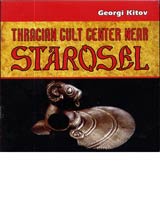- Американска и канадска художествена литература
- Антикварни книги
- Антични автори
- Балканска художествена литература
- Библиофилски издания
- Биология
- Българска художествена литература
- География, пътеводители
- Детска литература
- Европейска художествена литература
- Езикознание, лингвистика, семиотика, филология
- Езотерика, духовни учения
- Здравна и медицинска литература
- Земеделие и животновъдство
- Изкуство
- Икономическа литература
- История
- Календари, сувенири
- Компютърна литература
- Кулинарна литература
- Културология, етнология и фолклор
- Латиноамериканска художествена литература
- Литературна критика
- Литературна периодика
- Медии и комуникации
- Нобелова награда за литература
- Политология
- Правна литература
- Православна литература
- Психология
- Речници, справочници, енциклопедии
- Социология
- Спорт, хоби
- Точни науки, техника
- Учебна литература, Педагогика
- Философия
- Художествена литература от Азия, Африка и Австралия

Thracian cult center near Starossel
Продуктов номер: 6484Изчерпана
Автор: Георги Китов
Категория: Археология | Балканският полуостров преди Аспарух | География, пътеводители
Издателство: Славена
Състояние: Нова книга
47 страници
меки корици
Първо издание: второ издание, 2003
Народност: българска
THRACIAN CULT CENTER NEAR STAROSSEL In early 2000 by means of a letter, that took a long time to reach me, I was informed that in Starossel, Hissar region, "treasure-hunters discovered presumably the largest tomb constructed with chipped stones in the biggest tumulus located near the village". "The treasurehunters mask the entry in the daytime and work in the nights." I have been accustomed to hearing about such "epoch-making" discoveries, which are almost always disproved after the check up on the site. I had small causes to pay attention to the letter as the winter was at its height, the temperatures were low and there was a pretty amount of snow. I knew the treasure-hunters were rash but I could not believe they were that much as to do so. I had visited this tumulus and some others in 1991 when I directed the excavations of a tumular necropolis between the villages of Krasnovo and Krastevich to the west of Starossel. The great tumulus, shaping the top of a large hill, was a part integral of the landscape. Some roughly treated stone blocks had tumbled disorderly in the periphery of the "hill" and down its slope but they did not deserve to be called "chipped". The other tumulus in Manasticheto locality, piled alongside the way going between the village and the large tumulus, looked more interesting. It was twice smaller and was covered with thick and high oak trees. A tunnel was dug from the south and I was told that treasure-hunters had found there a stone wall. Since we were soiled, tired, and had not noticed any single stone there, we decided firmly and once again not to get astray by stories about treasure-hunter"s "discoveries". On the next year, we fully forgot about our decision and went to Starossel to rescue a tomb recently excavated in Roshava tumulus to the west of the village. This time we were not misled but it turned out it was a tomb studied by the great Bulgarian archaeologist Dr. Ivan Velkov. Our excavations were not useless - we managed to specify precisely the plan of the construction, discovered facts, which had been missed by Dr. Ivan Velkov and found new materials.